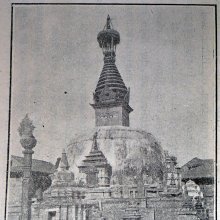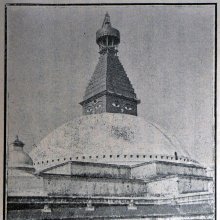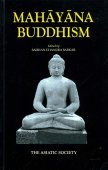Mahaparinirvana, Mahāparinirvāṇa: 5 definitions
Introduction:
Mahaparinirvana means something in Hinduism, Sanskrit, the history of ancient India. If you want to know the exact meaning, history, etymology or English translation of this term then check out the descriptions on this page. Add your comment or reference to a book if you want to contribute to this summary article.
Images (photo gallery)
(+1 more images available)
India history and geography
Source: Cologne Digital Sanskrit Dictionaries: Indian Epigraphical GlossaryMahāparinirvāṇa.—(CII 4), the passing away of the Buddha. Note: mahāparinirvāṇa is defined in the “Indian epigraphical glossary” as it can be found on ancient inscriptions commonly written in Sanskrit, Prakrit or Dravidian languages.

The history of India traces the identification of countries, villages, towns and other regions of India, as well as mythology, zoology, royal dynasties, rulers, tribes, local festivities and traditions and regional languages. Ancient India enjoyed religious freedom and encourages the path of Dharma, a concept common to Buddhism, Hinduism, and Jainism.
Languages of India and abroad
Sanskrit dictionary
Source: Cologne Digital Sanskrit Dictionaries: Edgerton Buddhist Hybrid Sanskrit DictionaryMahāparinirvāṇa (महापरिनिर्वाण) or Parinirvāṇa or Parinirvāṇa-sūtra or Mahāparinirvāṇa-sūtra.—: Karmavibhaṅga (and Karmavibhaṅgopadeśa) 156.15.
--- OR ---
Mahāparinirvāṇa (महापरिनिर्वाण).—nt., Mahāvyutpatti 1370; Karmavibhaṅga (and Karmavibhaṅgopadeśa) 159.12; °ṇa-sūtra, Karmavibhaṅga (and Karmavibhaṅgopadeśa) 158.2; 159.2; name of a work (also Parinirvāṇa-sūtra; = Pali Mahāparinibbāna-sutta, Dīghanikāya (Pali) sūtra 16). See Waldschmidt, NGGW, ph.-h. Kl., Fachgr. III, NF II Nr. 3 (1939); AbhGGW, ph.-h. Kl., 3te Folge, Nr. 29, 30 (1944, 1948); Abh. AW Berlin. ph.-h. Kl., 1949, Nr. 1 (1950).
Source: Cologne Digital Sanskrit Dictionaries: Monier-Williams Sanskrit-English DictionaryMahāparinirvāṇa (महापरिनिर्वाण):—[=mahā-parinirvāṇa] [from mahā > mah] n. Name of a Buddhist Sūtra.
[Sanskrit to German]
Sanskrit, also spelled संस्कृतम् (saṃskṛtam), is an ancient language of India commonly seen as the grandmother of the Indo-European language family (even English!). Closely allied with Prakrit and Pali, Sanskrit is more exhaustive in both grammar and terms and has the most extensive collection of literature in the world, greatly surpassing its sister-languages Greek and Latin.
See also (Relevant definitions)
Partial matches: Maha, Parinirvana.
Starts with: Mahaparinirvanasutra.
Full-text (+2): Mahaparinirvanasutra, Maha Parinibbana Sutta, Parinirvana, Parinirvanasutra, Nirvanangulimalika, Papa, Abhishekabhumi, Kushinagara, Nirvana-caitya, First Buddhist Council, Nanakarana, Mathura, Pava, Atuma, Seven Title Classification, Kushinagari, Alara Kalama, Arada Kalama, Putkasa, Aduma.
Relevant text
Search found 23 books and stories containing Mahaparinirvana, Mahāparinirvāṇa, Maha-parinirvana, Mahā-parinirvāṇa; (plurals include: Mahaparinirvanas, Mahāparinirvāṇas, parinirvanas, parinirvāṇas). You can also click to the full overview containing English textual excerpts. Below are direct links for the most relevant articles:
Buddha-nature (as Depicted in the Lankavatara-sutra) (by Nguyen Dac Sy)
1. Early period (c): The Mahāparinirvāna-sūtra < [Chapter 2 - The Buddha-Nature in the Tathāgatagarbha Literature]
1. Traces of the Buddha-nature in Early Buddhism (Introduction) < [Chapter 1 - Evolution of the Buddha-nature Concept]
1.1. The Buddha-nature and the Buddha’s Enlightenment < [Chapter 1 - Evolution of the Buddha-nature Concept]
Mahayana Mahaparinirvana Sutra
Chapter VI - On the Virtue of the Name < [Section One]
Chapter XXXI - On Bodhisattva Highly-virtuous King (e) < [Section Six]
The 6th Patriarch Platform Sutra
Stupas in Orissa (Study) (by Meenakshi Chauley)
After Buddha’s Mahaparinirvana < [Chapter 2]
Amaravati Art in the Context of Andhra Archaeology (by Sreyashi Ray chowdhuri)
The Demise or Mahāparinirvāṇa < [Chapter 3 - Amarāvatī and the Formative Stage of the Buddhist Art]
Division of Relics < [Chapter 3 - Amarāvatī and the Formative Stage of the Buddhist Art]
Symbolism of the Lotus in Buddhism < [Chapter 3 - Amarāvatī and the Formative Stage of the Buddhist Art]
Sripura (Archaeological Survey) (by Bikash Chandra Pradhan)
Scultures of Avalokitesvara < [Chapter 3 - Sculptural Programme]
Related products
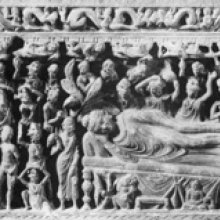
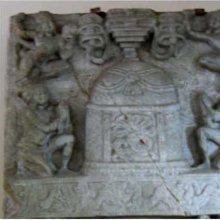
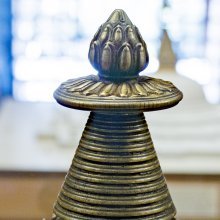
.jpg)
